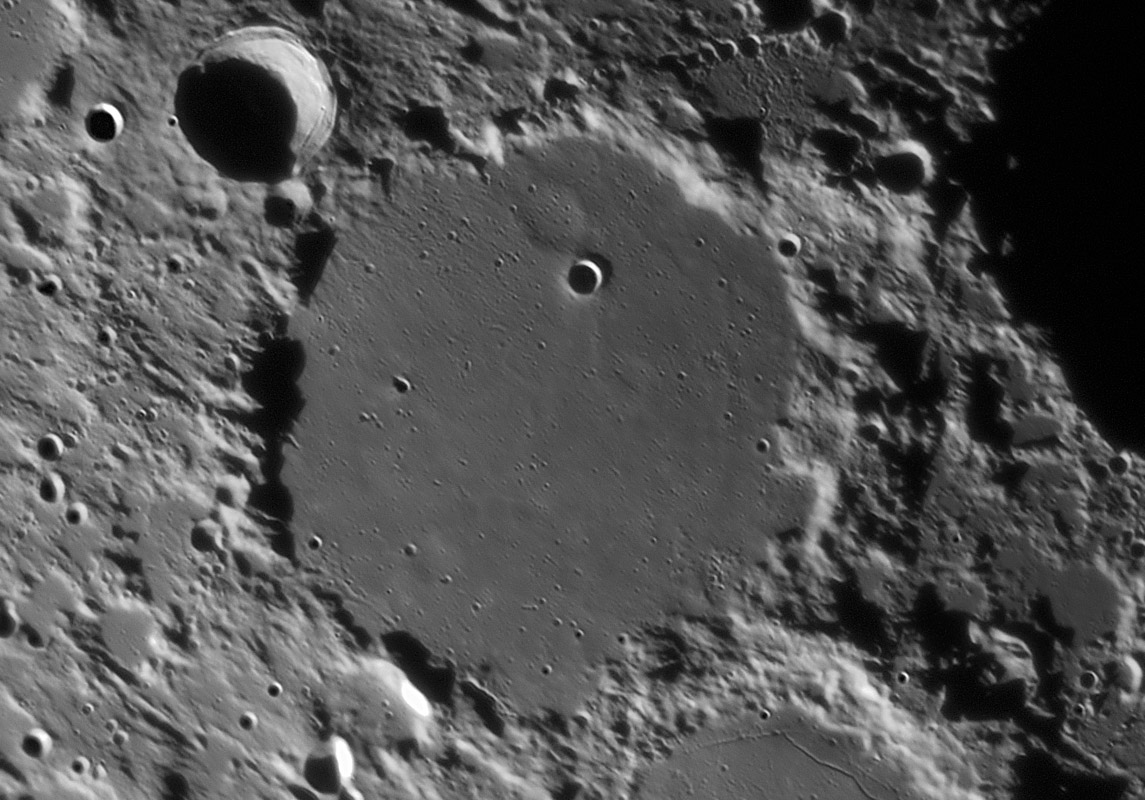February 28, 2018
Secondary Matters
Originally published September 28, 2008

image by Wes Higgins (N to the 11 o'clock position)
What two things do you see on the floor of Ptolemaeus?
There are lots of fresh small craters and some larger ghostly depressions. Many of the fresh craters are secondaries from the formation of 40 km wide Herschel just to the north. These secondaries and low ridges radiate away from Herschel, extending out as a coherent group about 70 km beyond the crater's rim. More of Herschel's secondaries are on Ptolemaeus' floor but they are more randomly scattered and harder to identify. The other features of interest are the very shallow depressions called saucers. Not flying saucers, but saucers as your great grand mother would have put under her tea cup. The saucer just north of Ammonius (previously Ptolemaeus A) is conspicuous enough that was designated Ptolemaeus B. This saucer has a slight ridged rim, but some other saucers appear to be rimless depressions. With grazing illumination more complicated ridges and irregular depressions appear. If Ptolemaeus were covered by dark mare we would simply say that lavas covered primary and secondary craters that formed on it's floor. But the floor is not dark, and the fresher craters don't excavate dark halos so the floor is not mare lavas covered by a veneer of brighter material. Apparently, the relatively smooth material in Ptolemaeus is ejecta from the formation of the Imbrium Basin. It is a fairly thick deposit because the crater is currently only about 2.4 km deep, whereas a fresh crater 165 km in diameter originally would have been about 5.5 km deep.
Chuck Wood
Technical Details
Aug 23, 2008. 18" Reflector, Infinity 2-1m camera, MAP-163X64, stack of 123 frames.
Related Links
Rükl plate 44
Yesterday's LPOD: A Wondrous Image
Tomorrow's LPOD: Eating Craters
COMMENTS?
Register, Log in, and join in the comments.



